How to brew Yunnan tin card varieties of small-grain coffee beans during the development of Yunnan boutique coffee industry?
Professional coffee knowledge exchange more coffee bean information please follow the coffee workshop (Wechat official account cafe_style)
Last month's release of Yunnan Coffee-themed movie "coming Home at one o'clock" sparked discussion in the coffee circle. There are many scenes that resonate with coffee lovers. In the movie, a protagonist describes Yunnan coffee as follows: "the refreshing aroma of imported tropical fruit, citrus, plum, orange peel, apricot, wild ginger flower, sweet and obvious, sour and bright, rich aroma of dark chocolate, smooth taste and rich layers." Another protagonist asked, "does it smell like distant mountains and woods?" "

Seeing here, you probably already know the flavor of Yunnan coffee producing area. Qianjie has tested different Yunnan coffee beans through cups over the years. It is considered that they have the fragrance of melons and fruits, the bright acidity of plums, the sweetness of brown sugar, the finish of nuts, sweetness, rich aroma and mellow taste.
Why can't Yunnan coffee afford the price?
Qianjie has been involved in the cultivation of Yunnan coffee in recent years, and thinks that if you want Yunnan coffee to be refined, you should choose the right variety, plant it at an appropriate altitude, and test a treatment method that can express its unique flavor after maturity. to establish the flavor map of Yunnan boutique coffee. Qianjie believes that in order to change the problem of "Yunnan boutique coffee is getting better year after year, but the price is still lower", it is necessary to make a change from the root, that is, the cultivation mentioned just now.
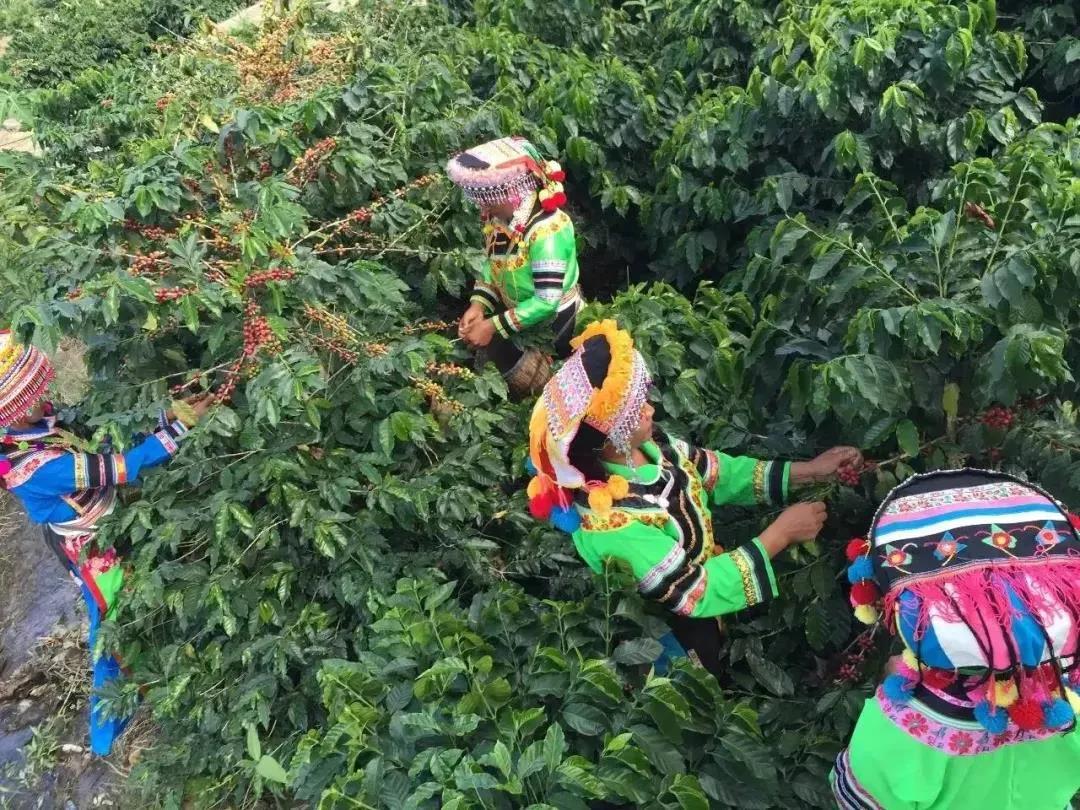
The reason why Yunnan coffee has always been unable to make high-quality coffee is that Kadim is too cheap and can only be sold as a unified product, about 15-20 yuan a kilogram, and the price is difficult to meet the price of picking workers and fertilizers, and farmers are unwilling to take care of it. The output of iron pickup and bourbon is low and easy to get sick, and the cost of management and protection is high. it takes longer to explore, not to mention whether it can form a unique flavor. On the one hand, curry farmers do not have a sense of fine coffee. On the other hand, even if you know it, it will take a few years to cut down the old tree and replant it.
Katim variety small popular science
Catimor
Katim is a combination of Arabica species and Robusta species. Robusta species have good resistance to leaf rust and rich oil, high yield and easy to grow. Katim has 25% of the Robusta gene after crossing with Arabica. Katim has 25% of the Robusta gene, which improves resistance to leaf rust and retains rich oil. at the same time, it has the rich taste of some original species of tin card. So most Yunnan manors began to plant Katim in a large area, and the planting scope of iron pickup began to shrink.
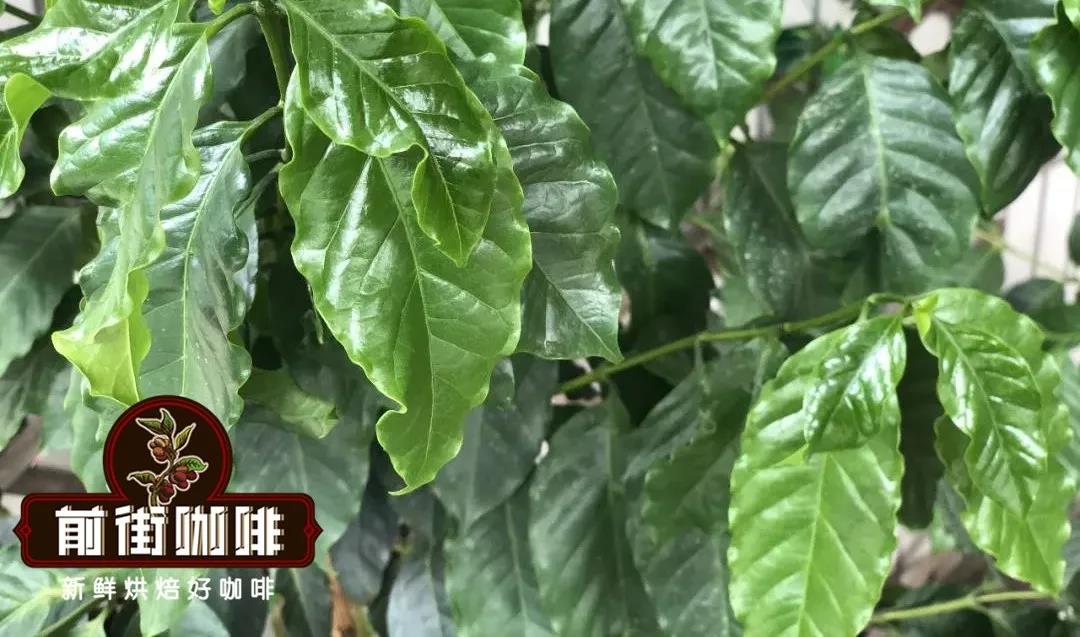
Why do Yunnan coffee beans pay so much attention to treatment in recent years?
In fact, they are trying to get around the relationship between the three. Their varieties can no longer be changed or do not want to be changed (99% of the varieties planted in Yunnan are Katim varieties), and the elevation cannot be changed. It just so happens that the treatment method is also popular in the market. So you will find that many Yunnan beans emphasize the post-treatment method. It is very strange and normal to only change the treatment method and put aside the variety and altitude.
So Qianjie went on with our idea of growing fine coffee while baking coffee. At the same time, we also visited the hot science institute (Tropical Agricultural Science Research Institute), which has in-depth research on coffee cultivation and the coffee provenance bank of the Ministry of Agriculture. A small number of farmers who planted fine coffee have found out the reasons why Tibica and Bourbon, the mainstream varieties of fine coffee, are not cultivated in Yunnan, and under the circumstances of coincidence. A piece of land suitable for planting was found on the border between Yunnan and Myanmar, and the road for planting in Yunnan began on Qianjie.

The coffee seedling chosen in Qianjie is a tin pickup, which is characterized by new copper leaves. The output of iron pickup is very low, which is 1/3 of that of Katim, so why is the price more expensive? At the same time, Ironhide Kaka and bourbon are also very easy to get rust, which is one of the reasons why farmers are reluctant to grow Arabica.
The variety of iron pickup is popular science.
Typica
The iron pickup has distinct features, and it is probably the easiest variety to identify. These plants are conical, with main vertical trunks up to 5 meters high. This height means that the distance between branches and nodes on the same branch is longer than that of other varieties.
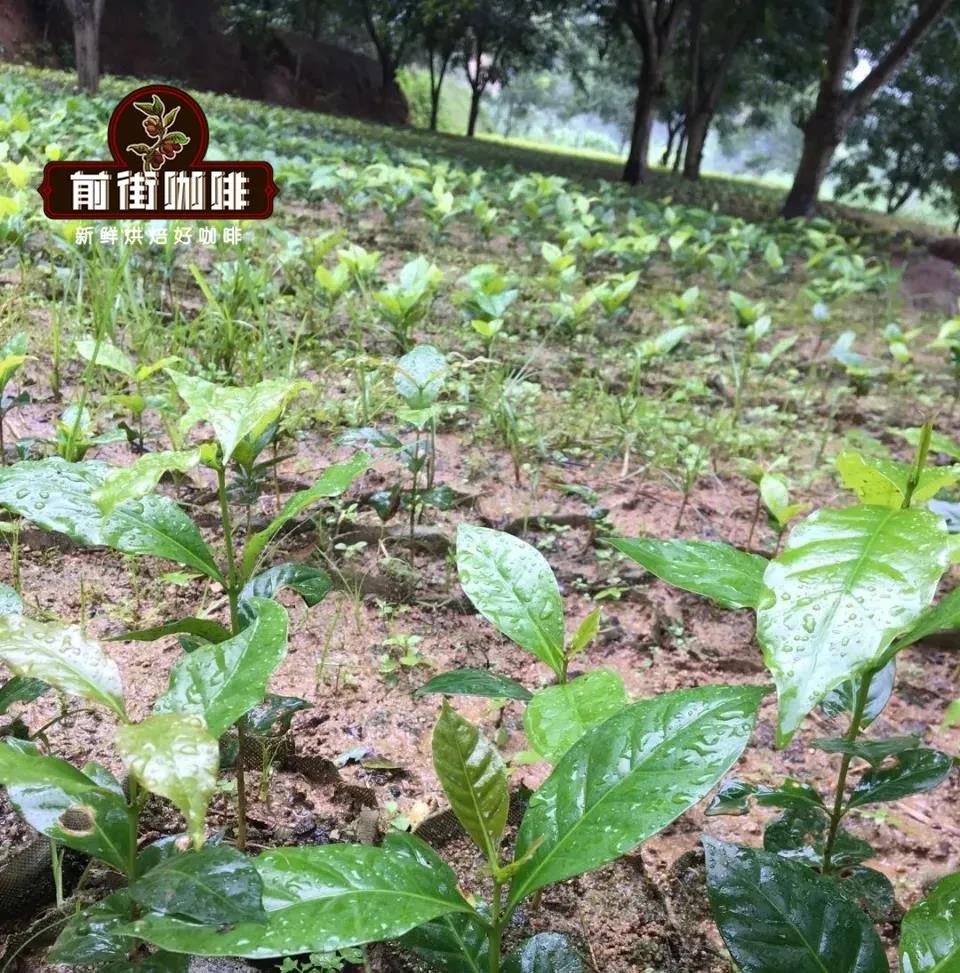
The lateral branches form an angle of 50 to 80 °with the vertical trunk. The trunk and branches are not very strong. Leaves, fruits and raw beans are usually slender, and the bud tips of young leaves are bronze. Ironpickup has a smoother leaf surface and fewer wavy boundaries than other Arabica varieties. The typical iron pickup fruit is bright red when it is ripe.
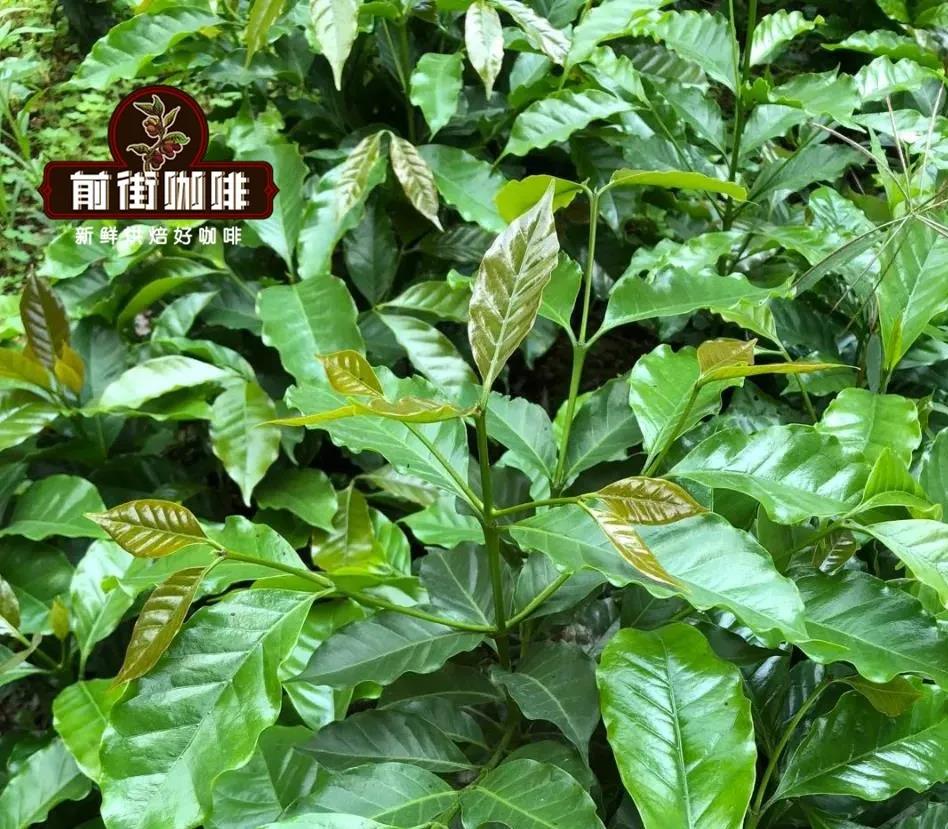
The bronze color of the top leaf of the iron pickup is one of the characteristics, with large beans, pointed oval or thin pointed shape, and some people call it "red top coffee". Iron pickup coffee has its unique quiet and clean flavor, as well as balanced features, high cleanliness, but the only drawback is insufficient production, altitude requirements, at the same time easy to infection with leaf rust, and resistance to diseases and insect pests is not strong.
Yunnan coffee producing area
Coffee cultivation in Yunnan is mainly distributed in Lincang, Baoshan and Pu'er, which has natural resources of low latitude, high altitude (1000-2000m) and large temperature difference between day and night, which makes Yunnan a golden growing area for producing Arabica coffee.
Pu'er coffee has a history of 100 years. It began to be cultivated at the end of the 19th century and developed into industrialization in 1988. Now the coffee planting area of the whole city has reached 767000 mu. It has become the main coffee producing area and coffee trade distribution center with the largest planting area, the highest yield and the best quality in the mainland.

Lincang: located in the southwest of Yunnan Province, the Tropic of Cancer runs through the south, Pu'er to the east, Dali to the north, Baoshan to the west, and Myanmar to the southwest. It is a bright pearl in the southwest of the motherland because it is bordered by the Lancang River. The annual average temperature in Lincang is between 16.8 ℃ and 17.2℃. The dry and wet season is obvious and the sunshine is sufficient.
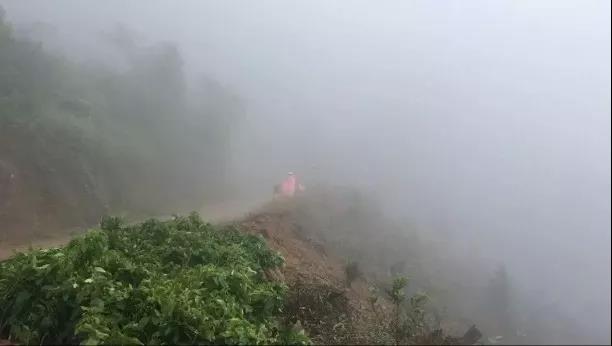
Baoshan: the average temperature in Baoshan is 21.5℃, the highest is 40.4 ℃, and it is basically frost-free all the year round. It is recognized as the best producing area of small-grain coffee. The small-grain coffee cultivated here is famous at home and abroad for its strong but not bitter, fragrant but not strong, well-proportioned small noodles, mellow and fruity. Baoshan small-grain coffee in Yunnan has a long history of cultivation. Baoshan small-grain coffee can be said to be a national geographical indication product. The Yunnan coffee growing area of Qianjie Coffee is also sitting here.
Traditional washing treatment of Yunnan Coffee
Washed
Qianjie came to the Yunnan producing area of the planting season and really realized what the rainy season is. It is sunny for a few minutes and it rains for half an hour. Because of the perennial rainy season and unstable climate, most coffee beans in Yunnan are treated with water washing.
Use a peeling machine to separate most of the pulp from the coffee beans, then guide the shelled beans to a clean sink, soak them in water and ferment to completely remove the residual pulp layer. In the past (about five years ago), washing was often the first choice for good coffee bean treatment.
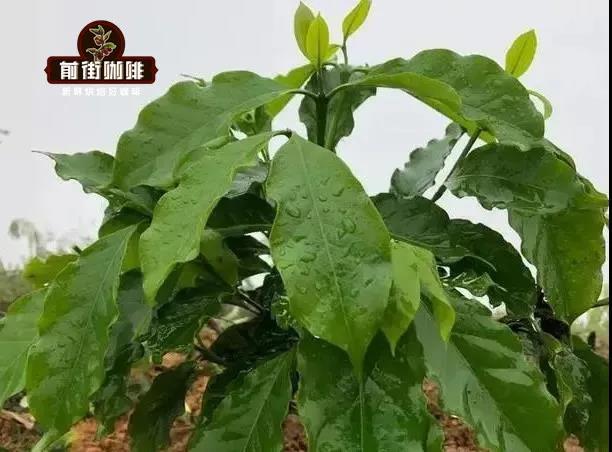
Through water treatment, unripe beans and defective beans are selected because of buoyancy, and the fermentation process is easier to control, so the flavor is not mixed like sun beans, but shows obvious acidity, complexity and cleaner (without any negative flavor, such as astringency or sharpness).
In Qianjie coffee, you can find two varieties of Yunnan coffee beans; one is a washed tin card, and the other is Katim coffee beans. Yunnan iron pickup is labeled as Yunnan boutique coffee, while Yunnan Katim coffee beans are labeled Yunnan small-grain coffee according to market habits. These two Yunnan Coffee Qianjie Coffee will be roasted to medium roast, because Yunnan is not a sour producing area, coffee bean flavor is more balanced, the tone is nut, brown sugar flavor.
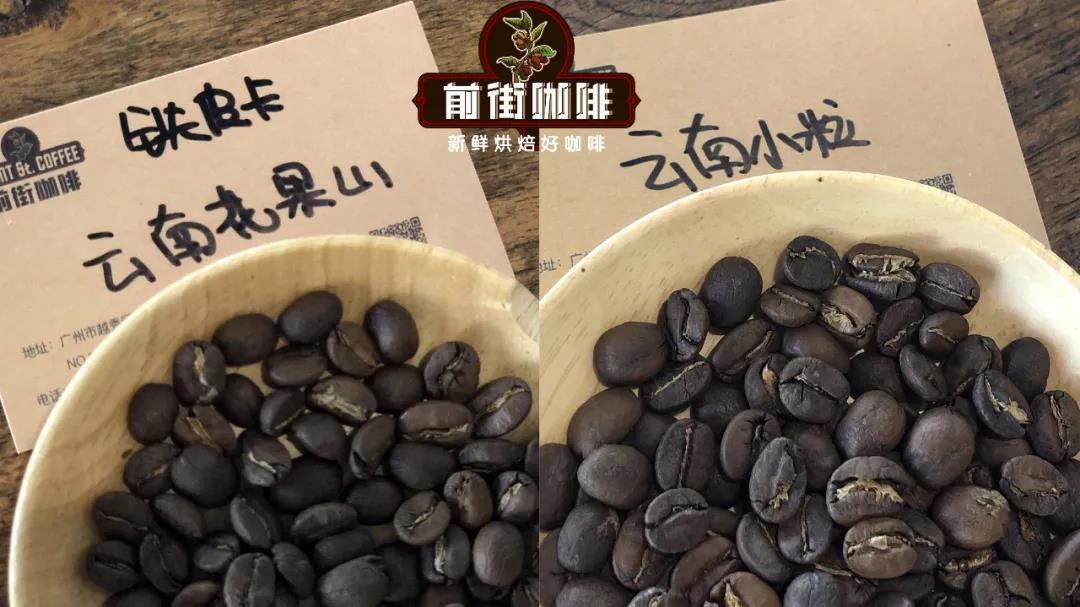
Experience of coffee baking in Qianjie
Yunnan small grain coffee: Yangjia 800N (roasting capacity 300g): furnace temperature 190 ℃, firepower 120, throttle open 3; tempering point 1, temperature 39 ℃, throttle 4, firepower unchanged; when furnace temperature 166℃, bean table turns yellow, grass smell disappears completely, enter dehydration stage, when furnace temperature reaches 188℃, firepower is adjusted to 60 ℃, throttle is 5. The smell of toast obviously changes to the smell of coffee, which can be defined as a prelude to an explosion. At this time, it is necessary to listen clearly to the sound of the explosion point. When the sound of the explosion point begins to explode, the throttle will remain unchanged. After an explosion, the development will take place for 3 minutes, and 198 ℃ will be put into the pot.
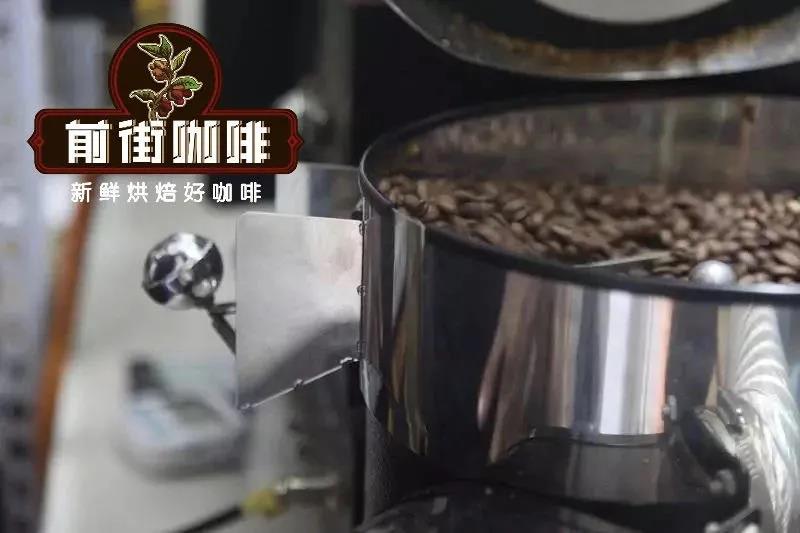
Yunnan Huaguoshan: Yangjia 800N (baking capacity 300g): furnace temperature to 200 degrees Celsius, throttle set for 1 minute, adjust firepower 160 degrees, return temperature point 1 minute, turn yellow, temperature 149 degrees, grass smell disappears completely, dehydration is completed, firepower remains unchanged, throttle changes 4. In the 6th minute, the firepower was adjusted to 140, in the 7th minute, the firepower was adjusted to 120, and in the 8th minute, ugly wrinkles and black markings appeared on the bean table, and the smell of toast obviously changed to coffee, which could be defined as a prelude to an explosion. At this time, listen clearly to the sound of the explosion point. Start to explode at 8: 37 ", fire power is 90, the throttle is fully open, and the firepower is adjusted to 20 degrees in the 9th minute. Go to the pot.
Coffee cup test report on Qianjie
Qianjie Coffee will be tested within 8-24 hours after the sample beans are roasted. Qianjie coffee makers generally use the cup test bowl capacity of 200ml ceramic bowl, which will be marked with 150ml and 200ml scale, according to SCAA standards, the TDS of water is about 150ppm, TDs is too low will easily cause over-extraction, too high will affect the taste and easy to lack of extraction, the cup measured the use of water temperature of 94 °. The cup test grinding degree according to the cup test standard of SCAA, the grinding degree is controlled as 20 standard screen (0.85mm), and the passing rate is 70% Mel 75%. Ratio: 11 grams of coffee powder plus 200 milliliters of hot water, that is, 1VR 18.18, so that the concentration of extraction happens to be within the range of 1.15% Murray 1.35% gold cup, soaking time: 4 minutes.
Yunnan Huaguoshan Coffee Bean Cup Test: rich aromas of fruit, melon, herbal aroma, supple in the mouth, middle nut, milk chocolate, lively and bright sour plums at the end, good balance on both cheeks, medium body in thickness, sweet and sour in the first, acidity in the aftertaste of apricot, citrus notes, and a little brown sugar.
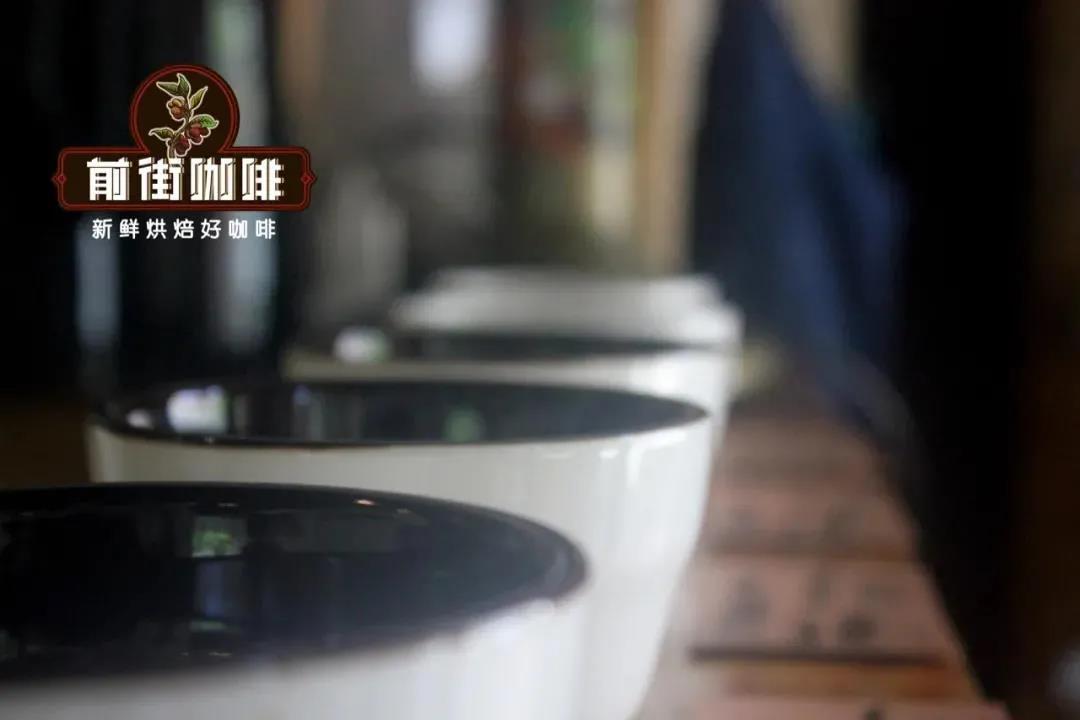
Yunnan small coffee cup test: the entrance is supple, the aroma of Asian herbs is lively and bright, the cheeks are lively and bright, the cheeks are sour, mellow and balanced, and the layers are rich. Yuyun dark chocolate, honey and sugar taste are obvious, and brown sugar flavor after complete cooling.
Experience of brewing coffee in Qianjie
Qianjie Coffee recommends that when these two cups of Yunnan coffee are washed, they tend to be balanced, requiring neither too much acidity nor too much modification of the tail section. The amount of coffee powder is 15g, the ratio of powder to water is recommended at 1:15, the flavor can be clearer at 1:16, the filter cup is kono filter cup, the temperature of brewing water is 88 degrees Celsius, the aim is to make the acid softer and the size of fine grinding / fine granulated sugar (the pass rate of sieve 20 is 80%).
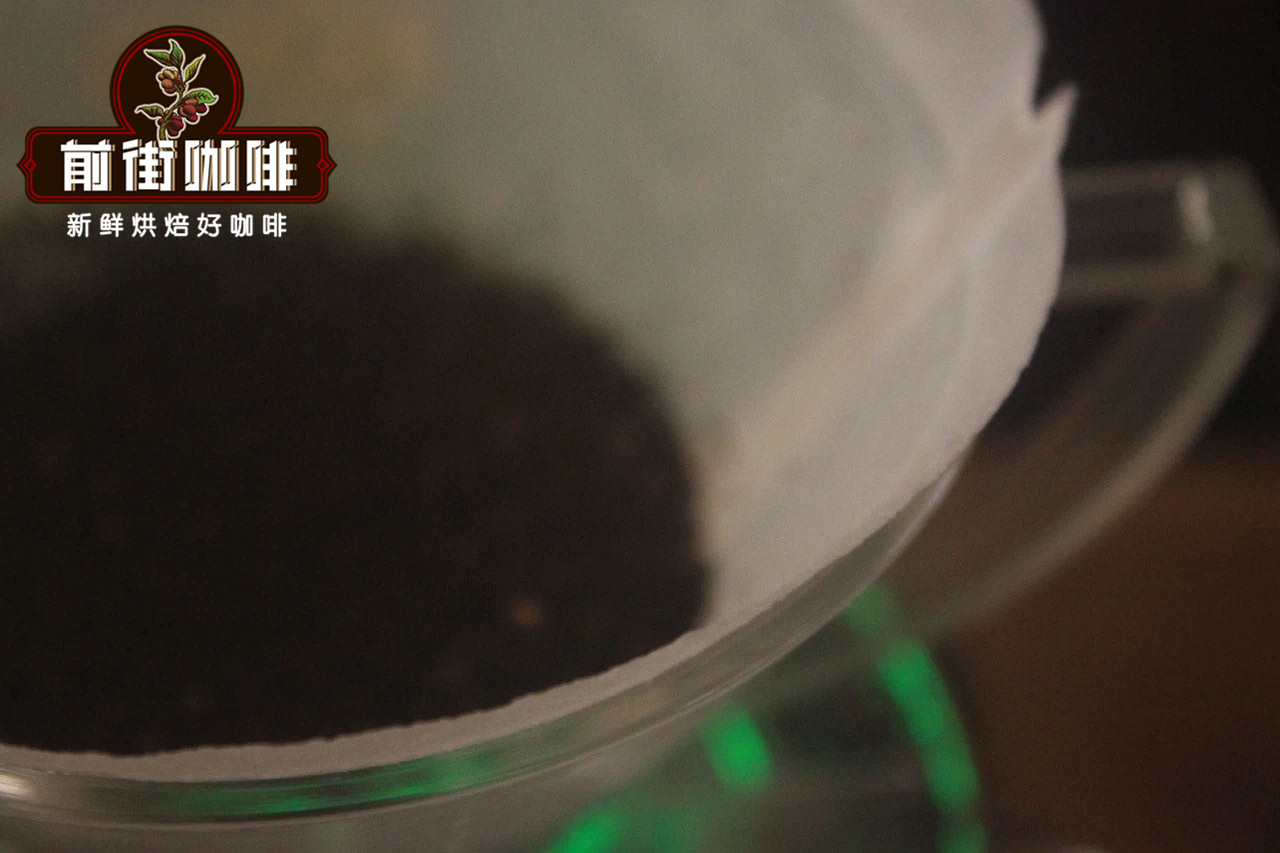
Qianjie sectional cooking technique: steaming with 30 grams of water for 30 seconds, injecting water around the circle to 125 grams for segments, continuing water injection to 225 grams when the water level is about to expose the powder bed, removing the filter cup when the water level is about to be exposed to the powder bed, (stifling starting time) extraction time is 2: 00 ".
Through this cooking method, Huaguoshan iron pickup coffee beans you can drink obvious baked nuts, soft acidity, overall balance fragrance, solid dark chocolate aroma, light orange peel. Small Katim coffee you can drink nutty aromas, herbs, chocolate, caramel, with a hint of acidity in the finish.
END-
Drinking coffee and closing your eyes, you can imagine that the place where Yunnan coffee is grown is a smoky, inaccessible mountain. Maybe this is the "distant mountain forest" smell of Qianjie coffee.
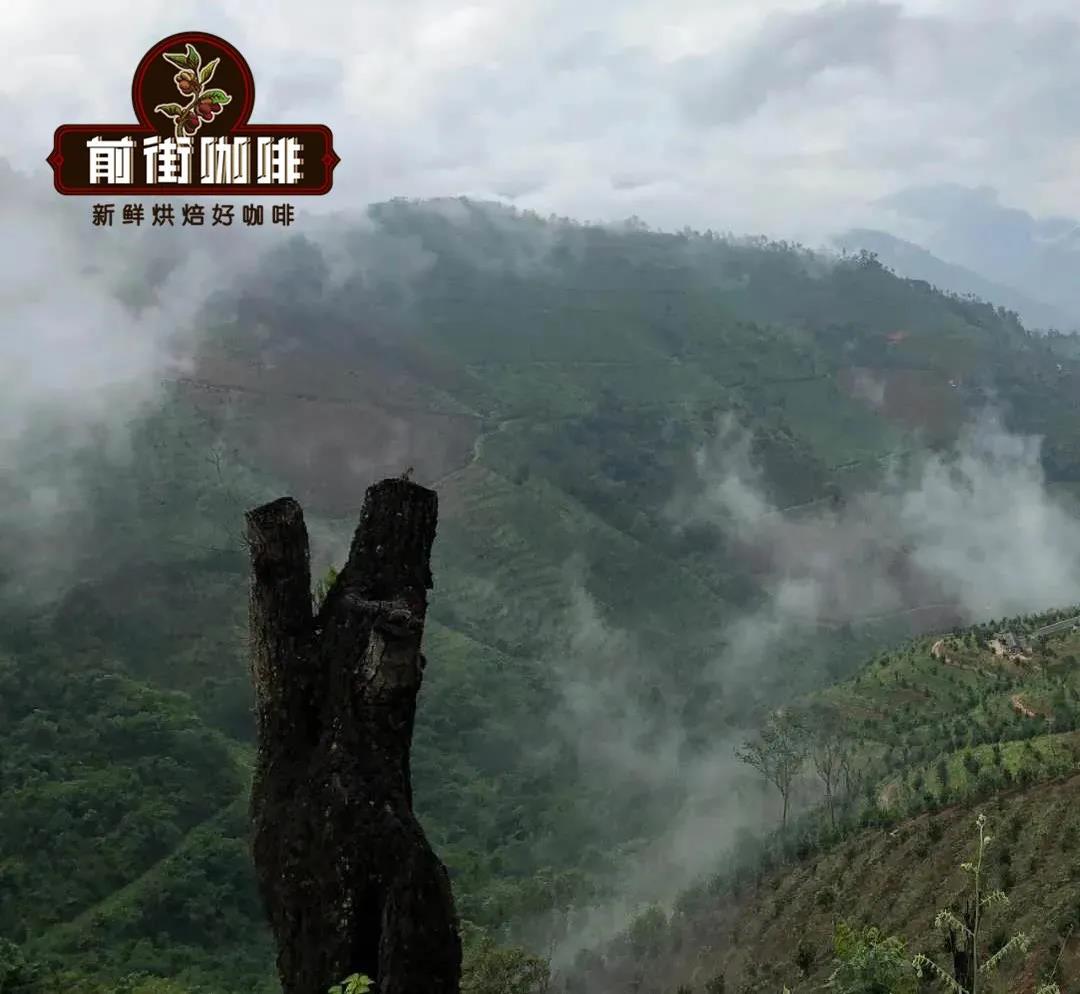
For more boutique coffee beans, please add private Qianjie coffee on Wechat. WeChat account: kaixinguoguo0925
Important Notice :
前街咖啡 FrontStreet Coffee has moved to new addredd:
FrontStreet Coffee Address: 315,Donghua East Road,GuangZhou
Tel:020 38364473
- Prev
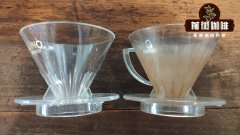
How to choose the material of hand coffee filter cup? Does the material of the filter cup have a great influence on coffee?
As long as people pour coffee on it, they keep talking about filter cups. Flat bottom or conical shape, the best size, choose the right filter cup to consider a lot of variables. However, one of the less discussed points is the material used to construct the filter cup. Although many people think this is not important, it does affect the way coffee is extracted. Which variables affect the cooking process? Pour in the coffee
- Next
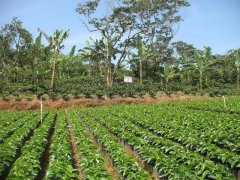
Difference of brewing flavor between Shirley coffee beans and litchi orchid coffee beans in Honduras boutique coffee producing area
Professional coffee knowledge exchange more coffee bean information please follow the coffee workshop (Wechat official account cafe_style) when it comes to Honduran coffee, I believe many enthusiasts will think of that cup of sherry coffee full of whisky and vanilla cream taste. Shirley and lychee orchid, two coffee beans from Honduran barrels handled in front of the street, have always been the hearts of many enthusiasts.
Related
- Beginners will see the "Coffee pull flower" guide!
- What is the difference between ice blog purified milk and ordinary milk coffee?
- Why is the Philippines the largest producer of crops in Liberia?
- For coffee extraction, should the fine powder be retained?
- How does extracted espresso fill pressed powder? How much strength does it take to press the powder?
- How to make jasmine cold extract coffee? Is the jasmine + latte good?
- Will this little toy really make the coffee taste better? How does Lily Drip affect coffee extraction?
- Will the action of slapping the filter cup also affect coffee extraction?
- What's the difference between powder-to-water ratio and powder-to-liquid ratio?
- What is the Ethiopian local species? What does it have to do with Heirloom native species?

